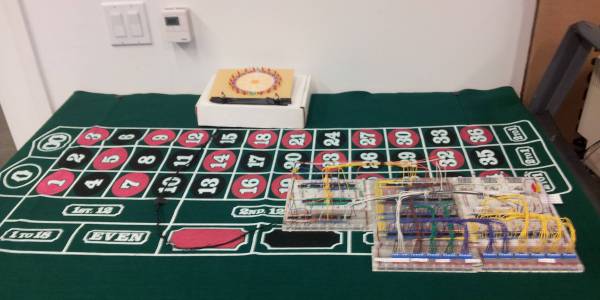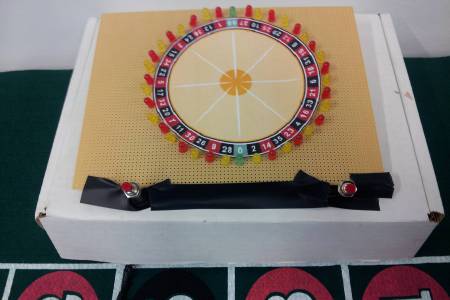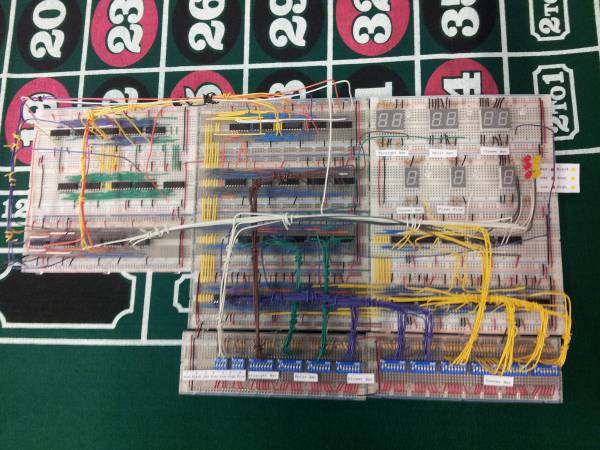Summary:
My final project for Digital Logic Design is electronic Roulette; adding to the growing Cooper digital casino. It includes a pseudo-randomized switch based Roulette wheel and betting interface. The wheel is modeled after the American Roulette wheel, which includes both 0 and 00. 38 LEDs form the wheel, corresponding to the numbers, 1-36, 0, and 00. A capacitor-based switch connected to a 555 timer allows for the spinning of the wheel and landing on a random number. Our project includes most of the main bets and are: straight, street, split, corner, red, black, even, odd, low, high and first five bet. A player enters their bet prior to the spinning of the wheel via dipswitch. The circuit recognizes a winning bet through logic involving JK flip-flops and comparators. Winning LED indicators for each type of bet are displayed next to 7-segment displays, which display payouts for that specific bet. For example, a straight bet on a number involves the highest payout, 35 to 1. As the wheel spins, a player can watch their corresponding winning LED indicator light up every time the wheel passes the bet they made. When the wheel comes to a halt, the LEDs that bets were made on will either be on or off depending on if the player has won on that specific bet. The entire project:
The Roulette Wheel (close-up):
Main Circuit:


